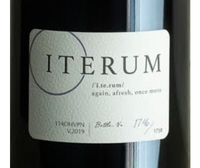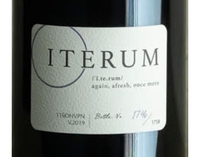Oh, that Joe. The veteran winemaker who also excels as a brand builder. The one behind “Wines by Joe,” a best-selling brand found on many supermarket shelves which he developed simultaneously with his high-end Dobbes Family Estate Wines. He later added ”Jovino” as a label for Willamette Valley Pinot Noir and Pinot Gris produced exclusively for restaurateurs. And later created a custom bottling facility in Dundee where he made wines for a dozen or more other wineries. Yes, that Joe.
By adding canned wines under the “Joe to Go” name, he guided his wine company on an upward course and it grew to become the third largest in Oregon by sales. As of 2018, he explained, “We owned 214 acres of vineyard and benefited from the work of more than 30 full-time, dedicated employees, as well as dozens of part-time and seasonal.” That success caught the attention of investors and in that year Bacchus Capital Management acquired 50% interest in 2018.
I met Joe and his wife, Patricia at that awards ceremony. After chatting briefly, he handed me his card which read “Founder, Proprietor & Winemaker” of Iterum Wines. “Iterum" roughly translates as “once more, afresh” and again, as in starting over again.
A brand from him with no mention of “Joe” in the name is by itself newsworthy. A few days later I began firing questions his way and I learned that to him “Iterum is all about getting back to my roots and being highly focused.” He is doing what he always wanted to do: getting dirty in the vineyards and focusing on high-end wines.
There’s also a circle on the business card to convey that Dobbes has come full circle and is back to where he began. His father was an amateur winemaker, and he grew up on the family’s large farm which included a vineyard planted in the early 1980s.
In the mid-1980s, Dobbes apprenticed at Wiengut Erbhof Tesch, in the German Nahe region, and in Burgundy, first with Christope Roumier of Domaine G. Roumier and then with Dominique Lafon of Domaine des Comtes Lafon. Returning to Oregon, he worked with Elk Cove Vineyards, Ken Wright Cellars, and others before becoming head winemaker at Willamette Valley Vineyards from 1996 to 2001.
In 2002, he noted, “I started Wine by Joe with a small amount of money in my back pocket, a lot of experience and passion, and a sufficient ignorance of what I was up against.”
Starting over in 2019, Joe, it is fair to assume, not only had much more money in his back pocket but also an impressive resume to show as a winemaker for 34 or so vintages. Also, along the way he worked with numerous vineyards within Oregon for both his own brands and for others. But he didn’t rush to start anew. When asked about his options then, he explained:
“I essentially took a two-year winemaking sabbatical after the 2016 vintage and 34 overall vintages. It was refreshing in a lot of ways, and allowed me to really think about who, and what I wanted to be in my next winemaking act. I had started Dundee Mobile Bottlers in 2017; however, I never intended to give up on making wine. In 2018 we bought our 21-acre dream estate from which I had made wine from in previous years for previous owners, as well as for Dobbes Family Estate. I never intended to give up on making wine. It was only a matter of when. The when for Iterum Wines ended up being the 2019 vintage.”
The “dream estate” is the Orchard House Estate located near Salem, the 21-acre Eola-Amity Hills property contained a vineyard started by Greg Cost. The first six acres of Pinot Noir were planted in 2000, followed by Chardonnay and Sauvignon Blanc plantings in 2016 and 2021. The vineyard now totals 11.98 acres. It was a “dream” for him because, he adds, “I made wine for the Cost family for several years starting in 2005, so I had a strong connection and understanding of the site. I then leased the vineyard through 2012 for Dobbes Family Estate.” He bought it in 2018, and it came with clones 114 and 115 of Pinot Noir and clones 76 and 548 of Chardonnay.
With Dobbes Family, he was making 8 different Pinot Noirs, often from single vineyards, and now with Iterum, he has added a new twist to single vineyard bottlings: single clone wines from single vineyards. Part of that dream he mentioned about his vineyard was that for Chardonnay, “the two clones that I would have planted were 76 and 548, which was crazy,” Dobbes says.
Thinking back, I recall clones first became a major topic in the USA primarily through Oregon’s pioneers who brought in Dijon clones and began an exhaustive evaluation. Now, since I had the attention of an iconic winemaker, I threw out the question of how he ranked the various clones and his thoughts on the market for single clone Pinot and Chardonnay.
“When I think about all the years of working with many different clones, I would have to say that one of my favorite wines I have produced, and continue to produce from a particular vineyard is made from two of the original heritage clones that were planted here in Oregon, namely, Pommard and Wadenswil. Every clone that I work with from any particular vineyard is always fermented separately. I will have enough fruit of each of these clones this year to bottle the clones separately.”
And he continues, “My Orchard House Vineyard estate presents a wonderful opportunity to compare the red fruited 115 Pinot Noir to the blue fruited 114. The single clone bottlings from the same vineyard source produced by the same hand off the same land, is the ultimate opportunity to geek out. Our customers absolutely love this.”
On the subject of geeky opportunities, I noted that Joe was the first in Oregon to make a Viognier and a Grenache Blanc. More recently, he has joined with a small band of winemakers intent on making a case for Sauvignon Blanc. He is on record calling Sauvignon Blanc “a world class wine for Willamette Valley.” So what’s behind that remark?
“Yes, indeed I have been quoted stating that I believe Sauvignon Blanc can be a world-class wine from Oregon just as we are known for Chardonnay and Pinot Noir. Sauvignon Blanc ranges from being low acid, low fruit and herbaceous to crisp, zesty and fresh, and then of course there is Sancerre.”
He continued, “I love the character in the richness of Sancerre, and also appreciate the fresh zestiness of New Zealand. My first Sauvignon Blanc produced from the 2021 vintage under the Iterum brand was made with the advanced intention of a style that is a combination of both regions, but of course is and reflects Oregon.”
Iterum is indeed a fresh start for Joe. That first estate Sauvignon Blanc has yet to be released. But the winery is marketing a 2021 Sauvignon Blanc from the Oak Grove Vineyard, a vineyard he first worked with in 1989. This Sauvignon is part of an “Old Friends” Collection of wines from vineyards he has worked with over the years. Currently, there are 4 different Pinots under this moniker.
But to return to single clone wines, he does not see them necessarily as a trend-setter because, he explains, “The single clonal bottlings from the same vineyard source is not something that everybody is able to do, and they also present additional sales work, so I think this is why you don’t see this very often.”
So, what does he hope to accomplish and add to his resume through Iterum’s wines? “I think at this time it is difficult to be completely unique or a first in the industry. However, I will refer back to my goals, and objectives for Sauvignon Blanc, by helping the cause for Sauvignon Blanc from Oregon. My goals and objectives for Iterum are to produce world class, stylistic, delicious and highly regarded wines to the point where the brand is eventually considered to be the equivalent of a three star Michelin restaurant rating.”
Well, based on tasting the inaugural Sauvignon Blanc, Chardonnay and the two single clone Pinot Noirs, I would say he is off to a great start. Detailed tasting notes of these Iterum wines appear below:
 This limited production (147 case) wine is made entirely from Dijon clone #114, a widely planted clone but one usually part of a clonal mix. As he did with his clone #115 Pinot Noir, winemaker Joe Dobbes used indigenous yeasts and vineyard bacteria to conduct both the primary and secondary fermentations. 15% whole clusters were added to the primary fermentations and both Pinots were then aged in French oak (35% new) for 16 months. And yes, each Pinot has its own distinct personality. This #114 is medium dark in color, and the wine slowly opens to reveal deep dark fruit and an earthy, forest floor aroma that has a hint of spice. It is medium-bodied and plush, with intense dark cherry and oak spice flavors along with background notes of cinnamon and clove, all supported by gentle, rounded tannins. When re-tasted a day later, it was more aromatic with velvety, mouth-filling, fully ripe flavors. Impressive now, but this one will be exciting to try after several years of bottle age. It was bottled unfined and unfiltered.
This limited production (147 case) wine is made entirely from Dijon clone #114, a widely planted clone but one usually part of a clonal mix. As he did with his clone #115 Pinot Noir, winemaker Joe Dobbes used indigenous yeasts and vineyard bacteria to conduct both the primary and secondary fermentations. 15% whole clusters were added to the primary fermentations and both Pinots were then aged in French oak (35% new) for 16 months. And yes, each Pinot has its own distinct personality. This #114 is medium dark in color, and the wine slowly opens to reveal deep dark fruit and an earthy, forest floor aroma that has a hint of spice. It is medium-bodied and plush, with intense dark cherry and oak spice flavors along with background notes of cinnamon and clove, all supported by gentle, rounded tannins. When re-tasted a day later, it was more aromatic with velvety, mouth-filling, fully ripe flavors. Impressive now, but this one will be exciting to try after several years of bottle age. It was bottled unfined and unfiltered. 95
 Tasted side by side, the clone 115 offering from Iterum Wines is more delicate and refined than the 114, and overall tends to be more subtle, yet still complex. In the glass, it shows beautiful high-toned initial aromas of red plum, cranberry, mocha and oak, along with a trace of tobacco leaf. Medium-bodied, it is polished and balanced with a velvety texture to it. The predominant yet easygoing flavors of cranberry, licorice and subtle oak toast work seamlessly together and take you to a long, delicate fruit finale with some gentle tannins in the background. Also bottled unfined and unfiltered, this strikes me as more polished and offers more immediate appeal while #114 has definite cellar potential.
Tasted side by side, the clone 115 offering from Iterum Wines is more delicate and refined than the 114, and overall tends to be more subtle, yet still complex. In the glass, it shows beautiful high-toned initial aromas of red plum, cranberry, mocha and oak, along with a trace of tobacco leaf. Medium-bodied, it is polished and balanced with a velvety texture to it. The predominant yet easygoing flavors of cranberry, licorice and subtle oak toast work seamlessly together and take you to a long, delicate fruit finale with some gentle tannins in the background. Also bottled unfined and unfiltered, this strikes me as more polished and offers more immediate appeal while #114 has definite cellar potential. 94
